Clay & Processes
Each panel was modelled in clay, just before casting real objects were used.
Each panel was modelled in clay, just before casting real objects were used.

Dried cracked clay after the mould has been remove. Photo by Adrian Rawle
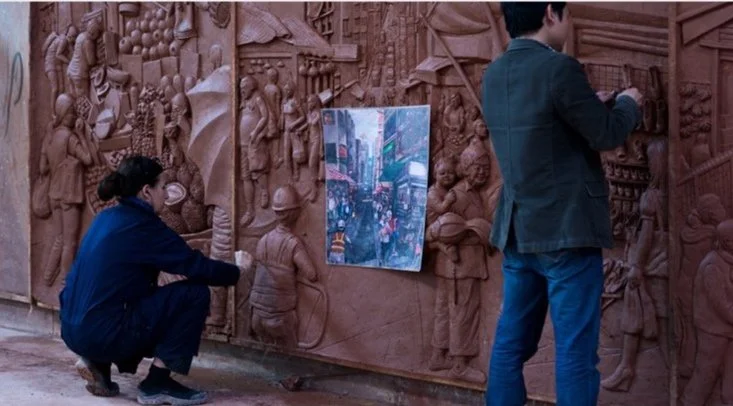
Louise and Dean working on the clay, street scene panels. See laminated reference image nailed into the clay. Photo by Adrian Rawle
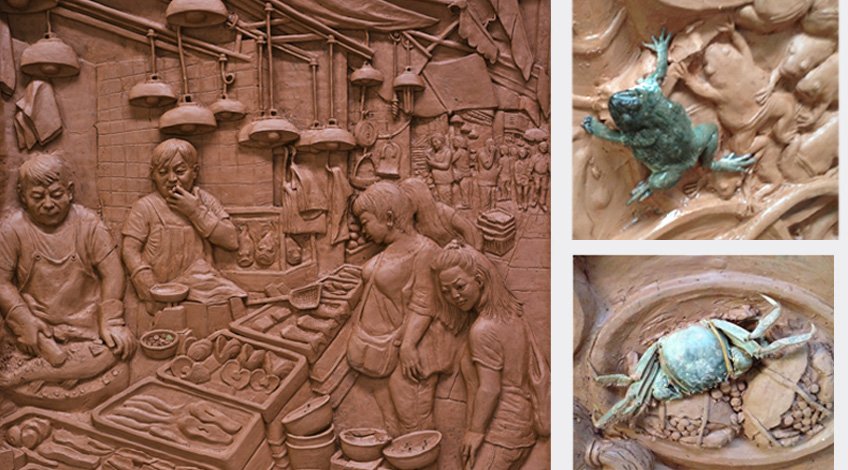
Clay and actual produce was pressed into the clay just before making the silicone jacket. When the mould is removed the produce is discarded. This poor frog was in a black rubbish bin at the wet market. It had been gutted and had no shape, so had to be stuffed with soft clay. Real objects have been cast in most of the clay panels. Lego pieces, coins, ropes, walnuts, durian, lychees, incense sticks and noodles . . .

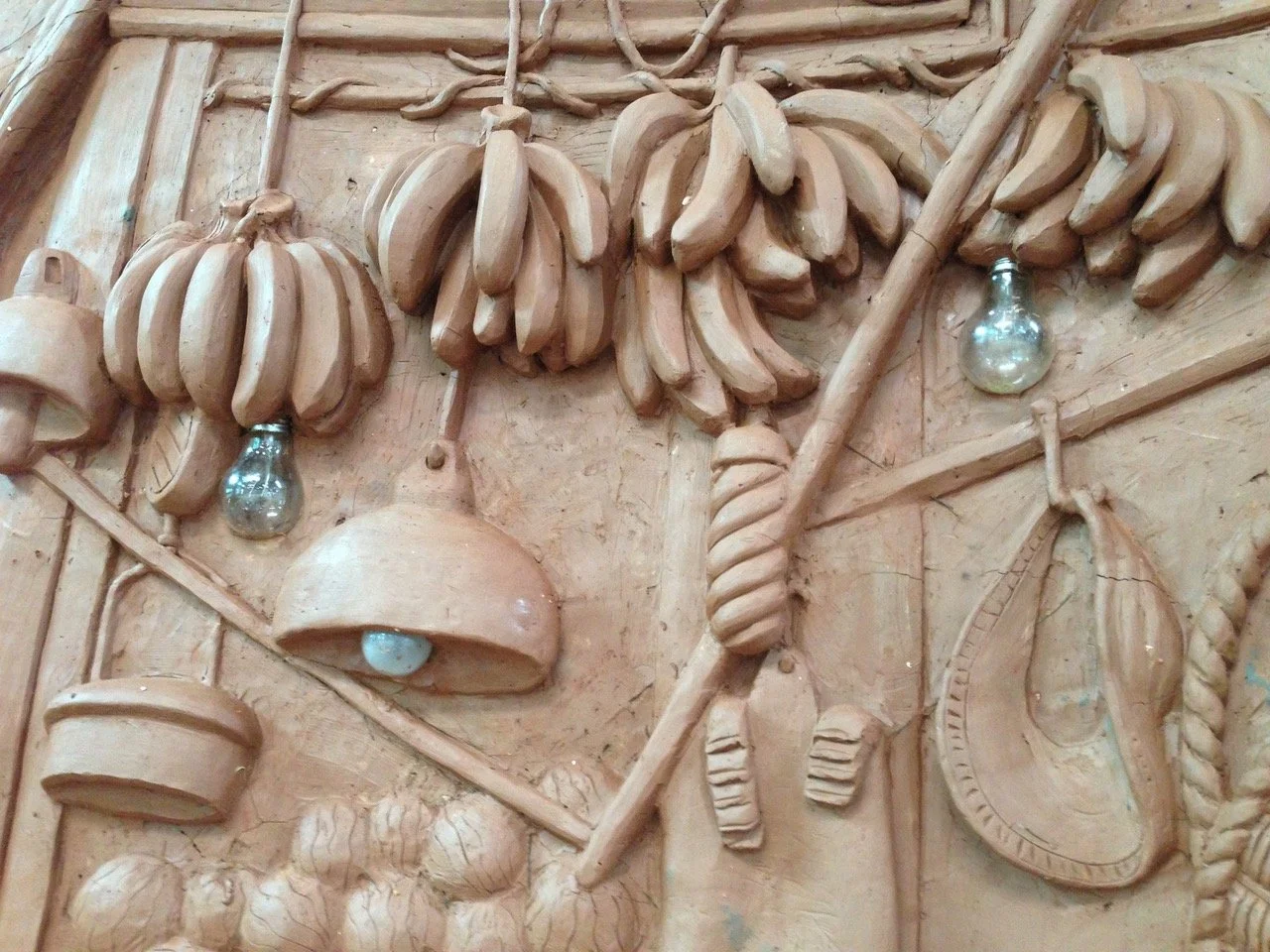
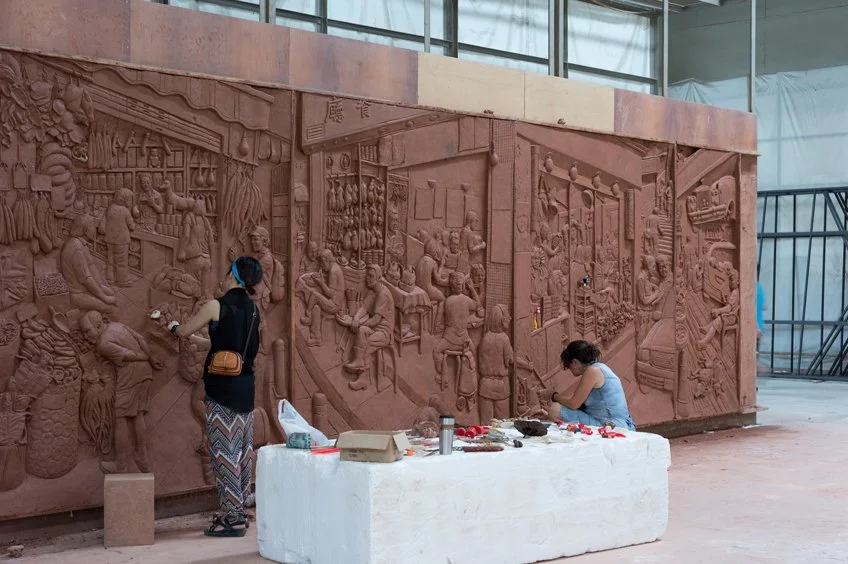
Josephine Tang and Louise working on the clay panels. Photo by Adrian Rawle. Pressing produce into the clay. The large polystyrene block made a useful working-bench and a nice warm seat in the winter. If you look closely, you can see some Chinese medicine, cordyceps, small red plastic lanterns and a large black fungus mushroom - all ready for casting.
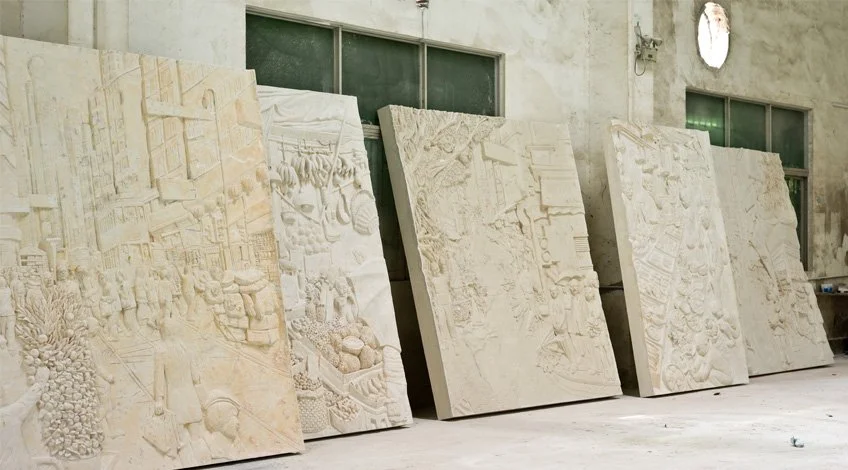
Unpainted, white FRP [Fibreglass Reinforced Plastics] casts freshly out of the moulds ready for priming and painting.
Photo by Adrian Rawle